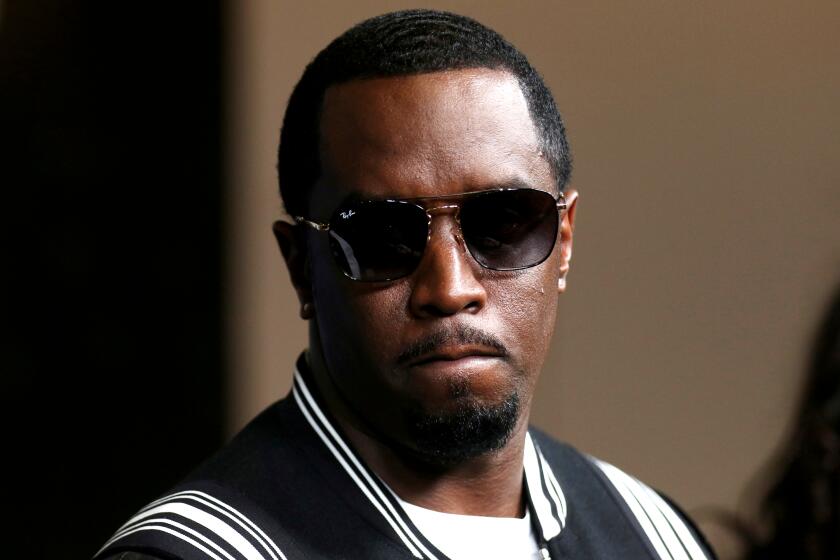California prison overcrowding
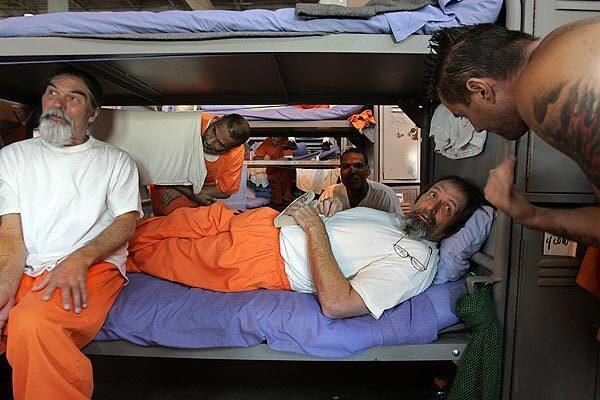
California’s state prisons have twice as many inmates as they were designed to hold. (Gary Friedman / Los Angeles Times)
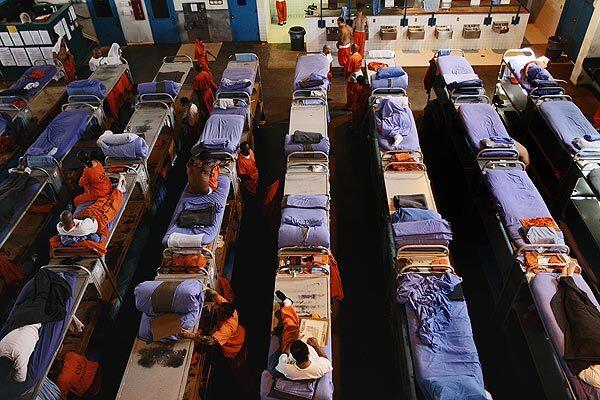
A gymnasium at the state prison in Lancaster is filled with inmates’ beds. (Gary Friedman / Los Angeles Times)
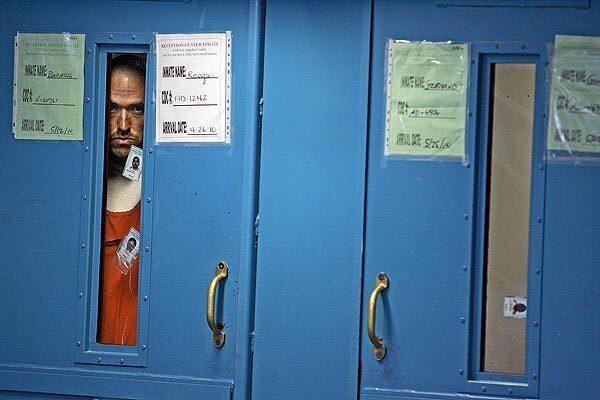
Federal judges and state corrections officials are in a tug of war over the treatment of California prison inmates. (Gary Friedman / Los Angeles Times)
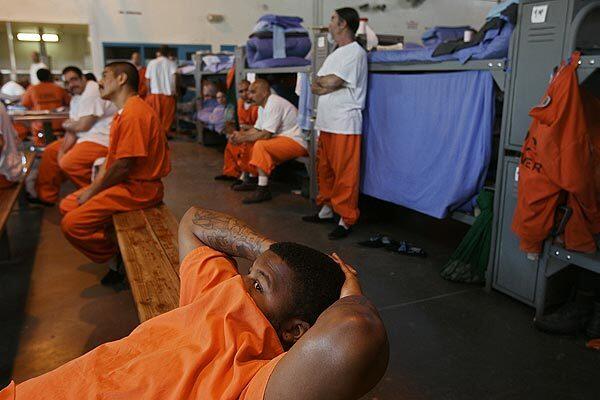
Inmates watch TV. Federal judges have empowered a phalanx of overseers and experts to mandate reforms on in prisoners’ healthcare, psychiatric treatment, parole rights, access to law libraries and other matters. (Gary Friedman / Los Angeles Times)
Advertisement
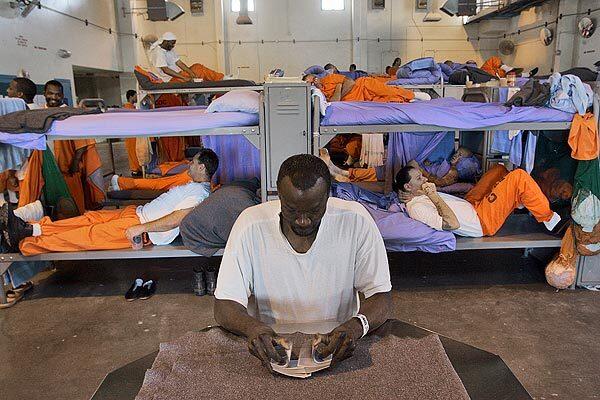
State officials argue that corrections experts, not court-appointed overseers, should run the prisons. (Gary Friedman / Los Angeles Times)
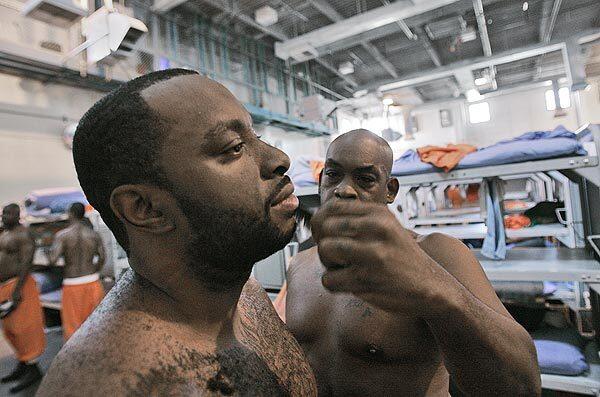
One inmate helps another shave his beard. (Gary Friedman / Los Angeles Times)
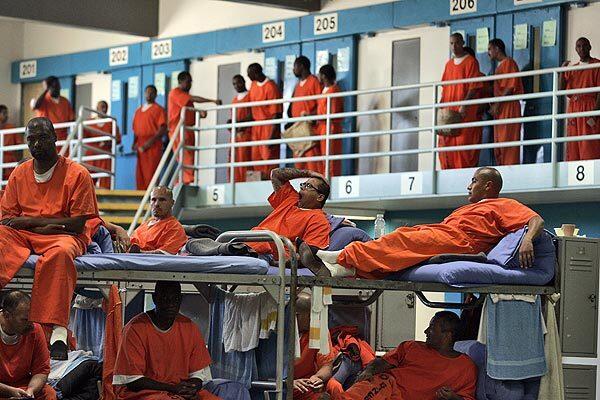
At a facility in the Lancaster prison, 200 inmates are housed in cells, above, and 40 bunk in the day room common area below. (Gary Friedman / Los Angeles Times)
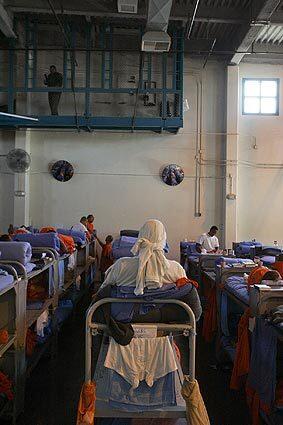
Federal judges have ordered California to cut its prison population by 40,000 -- about a quarter of its 165,000 inmates -- or build more facilities. (Gary Friedman / Los Angeles Times)
Advertisement
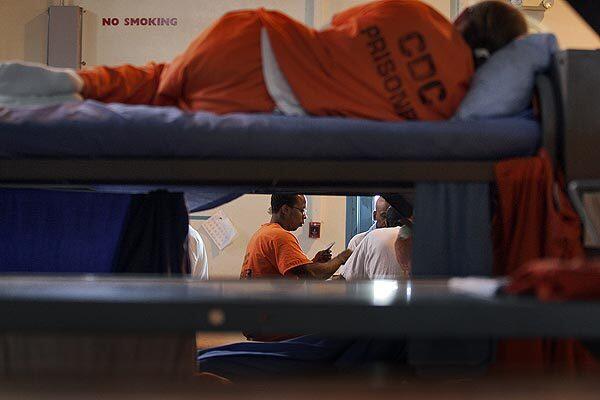
Gov. Arnold Schwarzenegger and state officials have challenged that order. (Gary Friedman / Los Angeles Times)
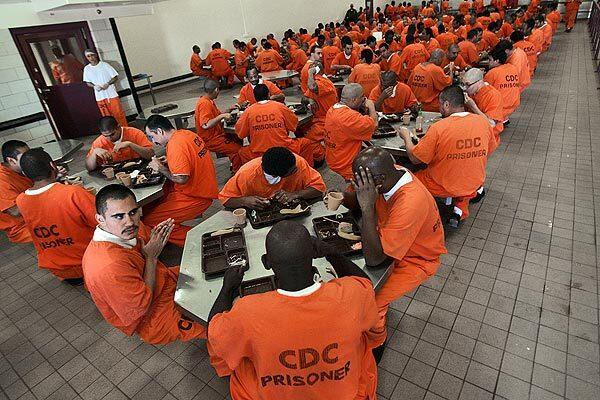
The U.S. Supreme Court is deciding whether to review the judges’ order to reduce overcrowding. (Gary Friedman / Los Angeles Times)
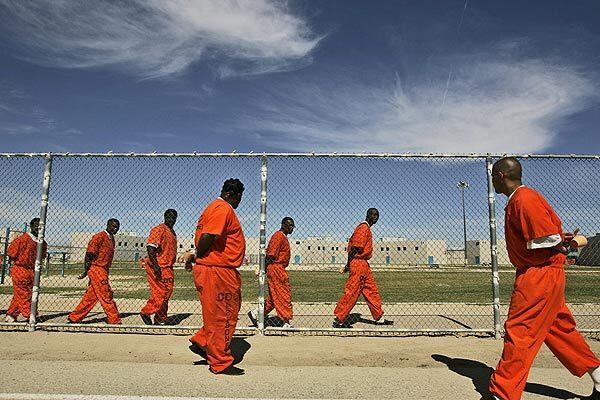
The prison yard in Lancaster. (Gary Friedman / Los Angeles Times)
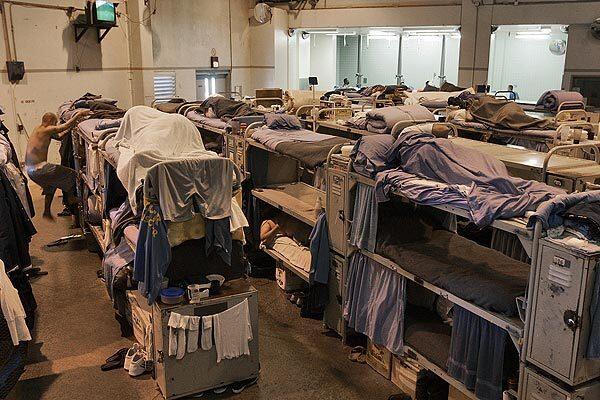
At Mule Creek State Prison, southeast of Sacramento, inmates complain that the overcrowding is a dangerous inducement to fighting that can lead to disciplinary sanctions and added time. (Gary Friedman / Los Angeles Times)
Advertisement
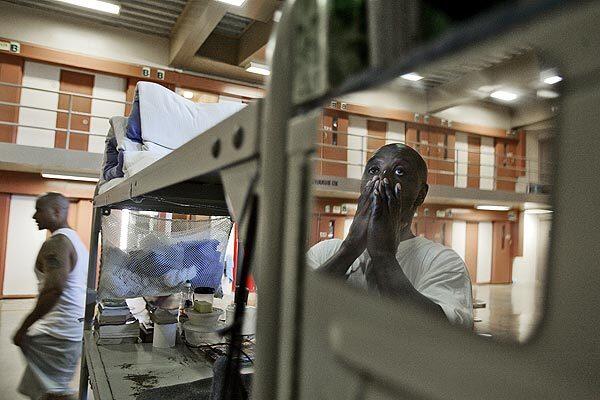
The Mule Creek facility was designed for 1,700 prisoners. It now holds 3,900. (Gary Friedman / Los Angeles Times)
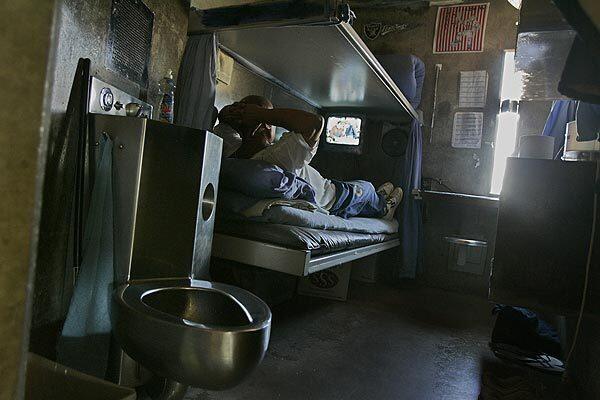
“In the winter we have a lot of sickness,” says Thomas Guice, whose bunk is in his cell block’s common area. “And in the summer it gets hot in here, and we have a lot of short tempers.” (Gary Friedman / Los Angeles Times)






